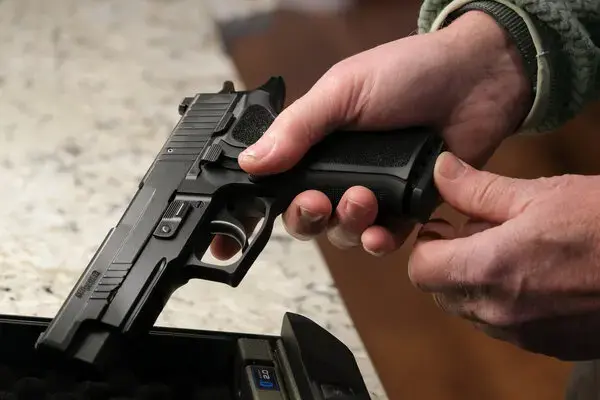
It’s the Guns… Or Is It? Why We Keep Missing the Root of Violence
- Jordan
- Sep 29, 2025
- 3 min read
Every time a shooting makes the news, the same argument rises to the top: “It’s the guns.” It’s not hard to understand why people say this. Guns are powerful, they make violence more lethal, and the thought of them being so widely available in America can feel overwhelming. For many people who have never grown up around firearms, or who only hear about them in the context of tragedy, it makes sense that the instinct would be to focus on the tool itself.
We don’t dismiss that concern. Guns are serious business, and anyone who treats them lightly shouldn’t be trusted with one. But here’s the problem with stopping the conversation there: blaming the gun is like blaming the steering wheel in a drunk driving accident. Yes, it was part of the crash. But the real story is everything that led up to it—the choices, the culture, the environment, and the failures of prevention.
Why Focusing Only on Guns Falls Short
Here’s a truth that’s uncomfortable for people on both sides: America will never be a zero-gun nation. We already have more guns than people. The knowledge of how to make them is centuries old. Even if every legally owned firearm vanished tomorrow, people with bad intentions would still find ways to get them, or they’d turn to other means. We see this in places with strict bans where violence doesn’t magically disappear—it just shifts form.
If we stop at “ban the guns,” we might feel like we’ve solved the problem, but in reality we’ve left the roots untouched.
The Roots We Keep Ignoring
So what are those roots? Why does someone make the choice to pick up a gun and harm others?
Alienation and desperation. People who feel invisible, powerless, or hopeless sometimes lash out in ways meant to make the world notice.
Cycles of abuse and neglect. Hurt people often hurt people, and unhealed trauma spills into future violence.
Toxic masculinity. Too many men are taught that violence is a legitimate response to failure, humiliation, or rejection.
Untreated mental health issues. Not every tragedy is a matter of mental illness, but ignoring it absolutely fuels the problem.
Institutional failure. Schools, workplaces, and law enforcement often see warning signs but fail to act until after it’s too late.
When we reduce all of that to “it’s the guns,” we take the spotlight off these systemic problems and onto an object, which is far easier to demonize than it is to solve for.
History Shows Us the Cost of Simplistic Solutions
This isn’t the first time America has chosen to fight objects instead of causes. In the 1980s and 1990s, politicians declared a “war on drugs.” They criminalized substances while ignoring the poverty and neglect that drove people toward them. The result wasn’t safer communities. It was mass incarceration, devastated neighborhoods, and problems that persist to this day.
We risk repeating that same mistake with firearms. If we don’t deal with the deeper issues, then even the most restrictive gun laws will only skim the surface.
A Harder but Better Conversation
If we truly want fewer tragedies, we need to talk about prevention, not just prohibition. That means:
Expanding access to mental health care.
Teaching boys and men healthier ways to handle failure and conflict.
Strengthening communities so fewer people fall through the cracks.
Empowering teachers, coaches, and peers to act when warning signs appear.
Holding institutions accountable when they ignore red flags.
None of this is as simple as saying “ban the guns.” But it’s the kind of work that actually saves lives.
Facing Reality
We understand why people say it’s the guns. They’re visible, they’re scary, and they’re part of every headline. But until we face the truth that violence is a human problem before it’s a tools problem, we’re going to keep spinning our wheels. Guns are here to stay, and the sooner we accept that, the sooner we can focus on the deeper work that could actually stop someone from ever wanting to pull a trigger in the first place.
That conversation may not be easy, but it’s the only one that has a real chance of making us safer.







Comments